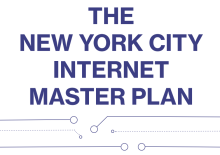Jamestown Leads the Charge for Municipal Fiber in Western New York
Jamestown - home to 30,000 residents, the largest population center in western Chautauqua County - could become the first city in the state of New York to construct a citywide municipal fiber network using American Rescue Plan relief funds.
In April, Mayor Eddie Sundquist formed a task force to assess the potential for a municipal fiber network in Jamestown. The city is currently working with EntryPoint Networks on a feasibility study to estimate the overall cost of the project, as well as surveying residential interest in building a municipally owned open access broadband network in Jamestown.
If the city's American Rescue Plan spending plan is approved by the Jamestown City Council, Jamestown will be the first city in New York state to embark on a municipal fiber build. Although many cities across New York state own dark fiber assets, and cooperatives in the southeastern and northern regions of the state are serving some residents, no city in the Empire State has moved forward with building a citywide fiber-to-the-home (FTTH) network.
Idea Dating Back to Sundquist’s Mayoral Campaign
Connecting citizens to new technology was a component of Mayor Eddie Sundquist’s 2019 mayoral campaign, centered around efforts to enhance economic development and community revitalization projects.
“Who says that we can’t become a technology hub attracting businesses around the country with our low cost of living and rich resources? Who says we can’t wire broadband and fiber to every home and business in this city at a lower cost?,” WRFA reported Sundquist campaigning in 2019.
In an interview with ILSR, Mayor Sundquist recalled that the message was well-received by Jamestown residents, and that even pre-pandemic, city residents were calling for more reliable Internet access offering higher speeds.



